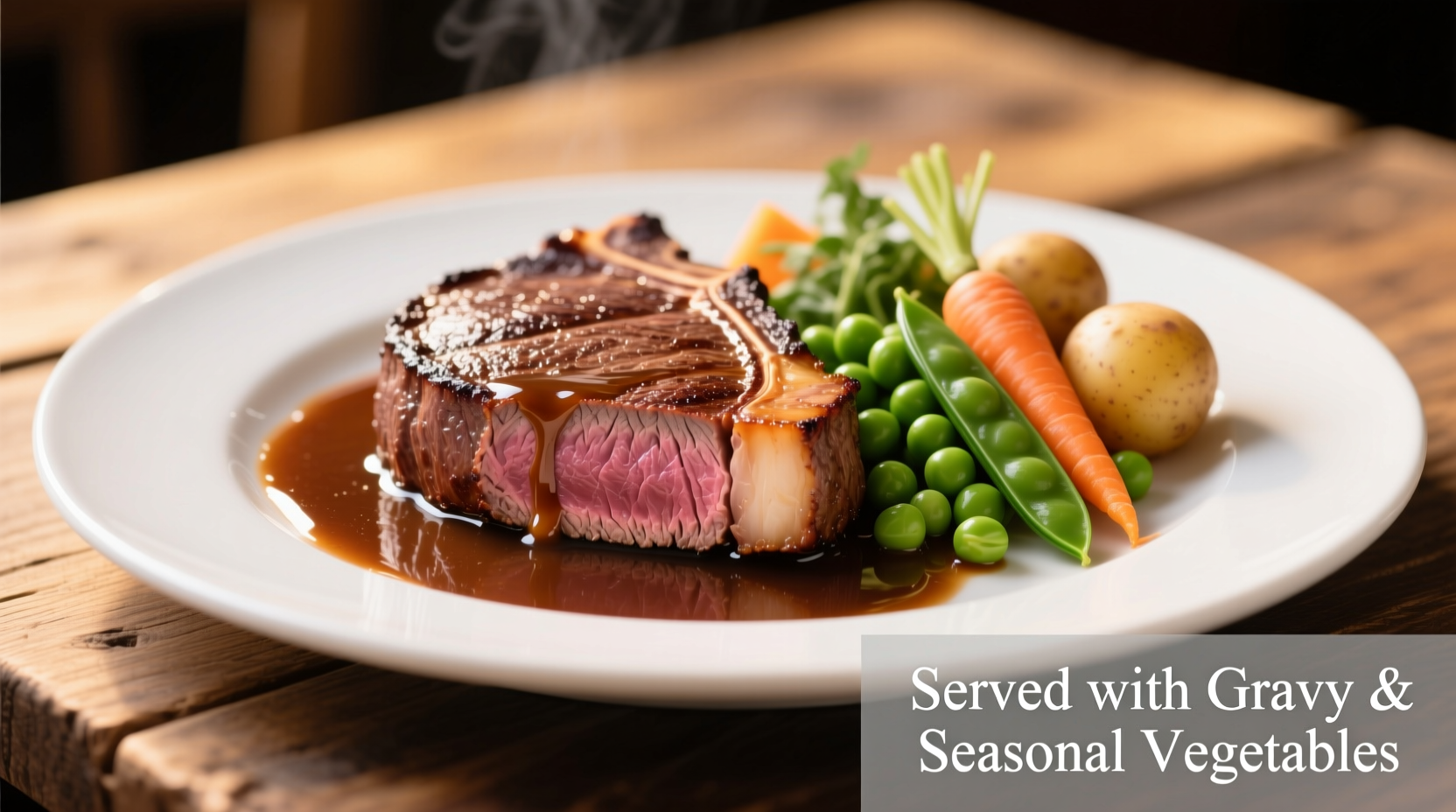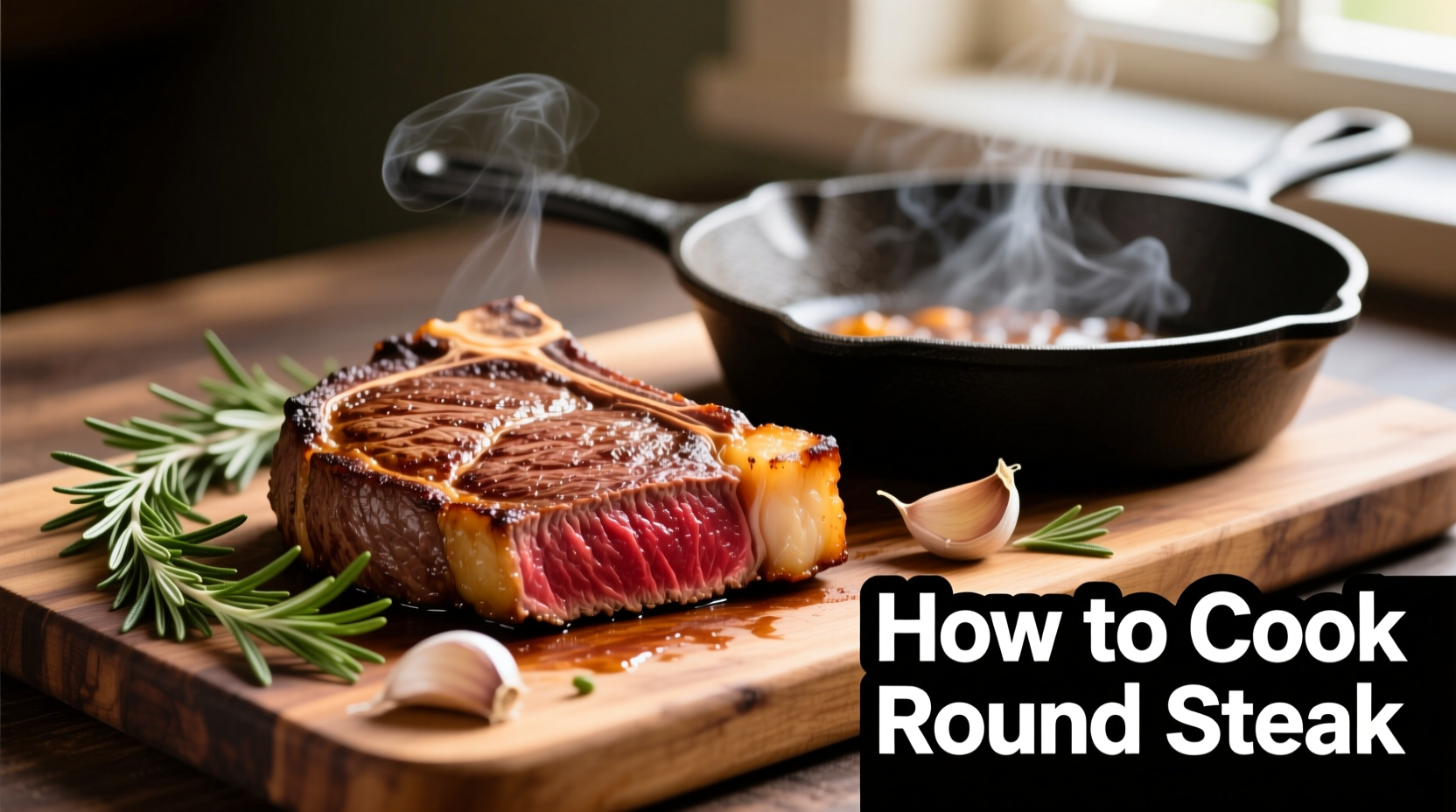Round steak often frustrates home cooks who expect tender results from high-heat methods. As a former line cook who's transformed thousands of pounds of this challenging cut, I've discovered the precise techniques that turn this budget-friendly beef into a meal worthy of special occasions. Forget everything you thought you knew about grilling round steak—this guide reveals the science-backed methods professional kitchens use to maximize tenderness and flavor.
Why Round Steak Needs Special Cooking Treatment
Round steak comes from the hindquarters of the cow—a heavily exercised muscle group that creates dense, lean meat with minimal marbling. Unlike ribeye or filet mignon, this cut lacks natural tenderness, making improper cooking methods disastrous. The USDA Meat and Poultry Hotline confirms that round steak contains only 4-6% fat compared to 15-20% in premium cuts, explaining its tendency toward chewiness when mishandled.
Your Round Steak Cooking Roadmap
Follow this sequence for guaranteed success, whether you're working with top round, bottom round, or eye of round:
Step 1: Strategic Tenderization (Non-Negotiable)
Before heat ever touches your steak, implement one of these proven tenderizing approaches:
- Acid-based marinade: Combine 1 cup buttermilk or pineapple juice with 2 tbsp vinegar and spices (minimum 4 hours, maximum 12)
- Mechanical tenderizing: Use a Jaccard tool to create 40-50 punctures per side, or pound to 3/4" thickness with textured mallet
- Dry brine: Coat with 1 tsp kosher salt per pound 24 hours before cooking to break down proteins
Food science research from Kansas State University's Department of Animal Sciences shows enzymatic marinades reduce shear force (tenderness measurement) by up to 37% compared to untreated samples.
Step 2: Choosing Your Cooking Method Wisely
Not all cooking techniques work equally well for round steak. This comparison table helps match your situation to the optimal approach:
| Cooking Method | Best For | Time Required | Tenderness Result |
|---|---|---|---|
| Braising (Dutch oven) | Thick cuts (1"+), family meals | 2.5-3 hours | ★★★★★ |
| Slow roasting | Large roasts, meal prep | 2-2.5 hours | ★★★★½ |
| Sous vide | Special occasions, precision cooking | 24-48 hours | ★★★★★ |
| Quick sear | Thin cuts (<3/4"), stir-fries | 8-12 minutes | ★★★½ |
Step 3: Precision Cooking Execution
Regardless of method, these universal principles apply:
- Temperature control: Never exceed 325°F for moist-heat methods; higher temperatures cause toughening
- Internal temperature: Pull at 130°F for medium-rare (it will rise 5-10° during rest)
- Resting time: Minimum 15 minutes for cuts under 2 lbs, 30+ minutes for larger roasts
- Slicing technique: Cut across the grain at 45° angle in 1/4" slices—this shortens muscle fibers dramatically
American Meat Science Association research demonstrates that slicing against the grain reduces required chewing force by 43% compared to with-the-grain cutting.
Step 4: Flavor Enhancement Secrets
Round steak's lean nature means it needs strategic flavor boosting:
- Add umami-rich ingredients like tomato paste or mushrooms to braising liquid
- Use smoked paprika (not regular paprika) for depth without liquid smoke
- Finish with a pat of compound butter for instant richness
- Reserve and reduce cooking liquid to create a natural gravy

Avoid These 3 Costly Mistakes
Even experienced cooks ruin round steak through these preventable errors:
- Overlooking thickness variation: This cut often has uneven thickness—fold thinner sections or use meat shields to prevent overcooking
- Skipping the rest period: Cutting too soon releases precious juices back into the pan instead of redistributing through the meat
- Misjudging doneness: Rely on thermometer, not color—round steak remains redder longer than marbled cuts at same temperature
When to Choose Alternative Approaches
Round steak's limitations require situational awareness. The Food Safety and Inspection Service notes this cut performs poorly in:
- Direct high-heat grilling (over 400°F) without prior tenderizing
- Cooking methods under 90 minutes without moist heat
- Recipes requiring rare doneness (below 125°F internal)
For weeknight meals, consider substituting with chuck steak for similar flavor with better marbling, or use round steak in dishes where long cooking times are expected like beef stroganoff or pot roast.
Perfect Round Steak Recipe Template
This adaptable framework works for 1.5-2 lb round steak:
- Tenderize with 1 cup buttermilk marinade + 2 tbsp Worcestershire + 3 crushed garlic cloves (overnight)
- Pat dry, season with 1 tsp each salt, pepper, smoked paprika
- Sear in Dutch oven until deeply browned (8-10 minutes)
- Add 1 cup beef broth, 1 diced onion, 2 carrots, 3 sprigs thyme
- Cover and braise at 300°F for 2.5 hours until fork-tender
- Rest 20 minutes, slice against grain, serve with reduced pan juices
Troubleshooting Common Issues
Rescue your round steak dinner with these fixes:
- Too tough? Return to braising liquid and cook 30-60 minutes longer
- Dry texture? Slice thinner and serve with extra gravy or pan juices
- Bland flavor? Deglaze pan with 1/4 cup red wine and reduce into sauce
- Overcooked? Shred for sandwiches or tacos with flavorful sauces











 浙公网安备
33010002000092号
浙公网安备
33010002000092号 浙B2-20120091-4
浙B2-20120091-4